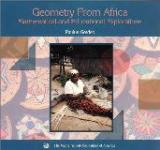15
Suppose you have an infinitely large sheet of paper (mathematicians refer to this hypothetical object as the plane). You also have a number of different colours - pots of paint, perhaps. Your aim is to colour every point on the plane using the colours available. That is, each point must be assigned one colour.
This beautifully illustrated book by the world's leading authority on African mathematics provides us with a wide-ranging introduction to mathematical intuition in sub-Saharan African cultures. These cultures are extremely diverse and expressive in their creation of designs and motifs that embody geometrical and topological ideas. No one is better qualified to tell us about it than Paulus Gerdes, who has lived and worked in Mozambique for many years.



